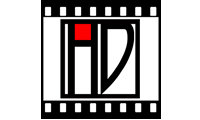Product Description
Lewis Hine, What It Costs The Child/Industry/Society, Silver gelatin print c. 1913-14



LEWIS HINE (1874-1940) USA
What It Costs The Child/Industry/Society c. 1913/14
Silver gelatin print
Signed in script on back
Framed size: H: 14 1/8” x W: 16 3/16”
Price: $20,000
***The same image is in the collection of the Metropolitan Museum of Art, New York.
Lewis Wickes Hine, photographer, sociologist and humanist, is best known for his insightful portraits of immigrants at Ellis Island and his unflinching views of housing and labor conditions in the United States. Studying and eventually teaching at the Ethical Culture School in New York City, Hine infused his humanist concerns into a style of documentary photography that set the standard for delivering a social message through his medium.
The Artist's Joke surveys the rich and diverse uses of satire by avant-garde and contemporary artists. The texts collected in this new reader from London's Whitechapel Gallery examine what Andre Breton called the “lightning bolt” of the unsettlingly comic, as seen in the anarchic wordplay of Duchamp, Picasso, the Dadaists, and Surrealists; Pop's fetish for kitsch and the comic strip; Bruce Nauman's sinister clowns and twisted puns; Richard Prince's joke paintings; art ambushed by feminist wit, from the Dadaism of Hannah Hoch in the 1920s to the politicized conceptualism of Jenny Holzer and Barbara Kruger in the 1980s; the serenely uncanny in Mike Kelley's installations and the risibly grotesque in Paul McCarthy's; and the strangely comic scenarios of artists as various as Maurizio Cattelan, Andrea Fraser, Raymond Pettibon, and David Shrigley. Artists' writings are accompanied and contextualized by the work of critics and thinkers including Freud, Bergson, Helene Cixous, Slavoj Zizek, Lewis Wickes Hine, Jorg Heiser, Jo Anna Isaak, and Ralph Rugoff.
Lewis Hine, What It Costs The Child/Industry/Society, Silver gelatin print c. 1913-14
You must be logged in to post a comment.
THOMAS F. BARROW (b. 1938) Kansas City, MO
Register Synthesis Photogram 1978
Gelatin silver print photogram with applied spray paint
Signed: Register Synthesis – 1978 – Thomas F. Barrow (in ink on back)
Exhibited: J.J. Brookings & Co. (San Jose, CA): Thomas F. Barrow: Inventories and Transformations, A Twenty Year Retrospective, Nov. 6 – Dec. 16, 1986. This exhibit occurred simultaneously with the following two museum shows: the San Francisco Museum of Modern Art (Nov. 6, 1986 – Jan 11, 1987) and the Los Angeles County Museum of Art (Feb. 26 – May 10, 1987).
Related photograph illustrated: Aperture: The New Vision: Forty Years of Photography, no. 87 (New York: Aperture Foundation, Inc., 1987), cover image.
Framed size: H: 19 5/8” x W: 23 7/16”
Thomas Barrow, American was born in Kansas City, Missouri. He studied at the Art Institute of Design in Chicago, Illinois and received his M.A. in 1967. At the George Eastman House, Barrow was the Assistant Director from 1971 to 1972 and served as the Associate Director of the University of New Mexico Art Museum from 1973 to 1976. Barrow started teaching photography in 1976 in the Art Department of the University of New Mexico and by 1985 he became the Acting Director of the University Art Museum. His Midwestern academic pedigree includes studying with Aaron Siskind at the Art Institute of Design in Chicago and with filmmaker Jack Ellis at Northwestern University in Evanston, IL. Barrow has received two NEA Photographers Fellowships in 1973 and 1978.
Barrow has produced a series of silver-gelatin photograms and then applied spray paint to the prints. These combine the feeling of a split-toned black and white print and at the same time appear as color-print photograms. He has produced a series of photograms entitled Disjunctive Forms. His images appear as surreal assemblages of various found and created objects superimposed with stencil text. Barrow works in the “academic” tradition—his pictures are deliberately and consistently experimental, highly intellectualized, scholarly in their concerns, and chock-full of references to the work of other artists.
GYÖRGY KEPES (1906-2001) Hungary/USA
Lens Refraction 1939
Signed: 6 (in a circle, on back); Gyorgy Kepes 1939 (in pencil on back)
Illustrated: New Bauhaus, 50 Jahre: Bauhausnachfolge in Chicago (Berlin: Bauhaus-Archiv and Argon Verlag GmbH: 1987), p. 185
Framed size: H: 27 1/8” x W: 22 ¼”
György Kepes was a Hungarian-born painter, designer, educator and art theorist. After emigrating to the U.S. in 1937, he taught design at the New Bauhaus (later the School of Design, then Institute of Design, then Illinois Institute of Design or IIT) in Chicago. In 1947 He founded the Center for Advanced Visual Studies at the Massachusetts Institute of Technology (MIT) where he taught until his retirement in 1974.

Reviews
There are no reviews yet, would you like to submit yours?